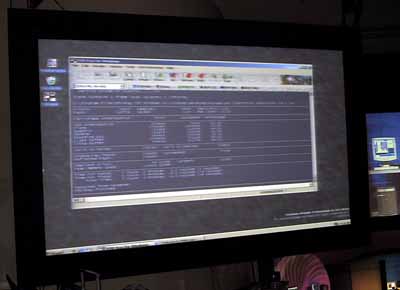Intel Developer Forum Conference - Spring 2001: Part 1
by Anand Lal Shimpi on March 5, 2001 12:00 PM EST- Posted in
- Trade Shows
Set your sights on Mt. McKinley
The past two IDF Conferences have been centered on the Pentium 4 and Intel's upcoming IA-64 processor, the Itanium. And although the Pentium 4 was present all over the show floor, the Itanium's presence was not nearly as great. Instead, the Itanium's successor, codenamed McKinley was the talk of the town this time.
For an Itanium update, the Itanium is still on schedule to be released in the second quarter of this year. The Itanium will debut at 733MHz and offering possibly higher speed grades, with a backside bus to its off-die L3 cache.
The McKinley, most likely branded under some form of the Itanium name, will be introduced at the end of this year with platforms shipping in 2002. The McKinley will offer some significant improvements over the Itanium, including an updated FSB with 3 times the amount of bandwidth as the Itanium's bus. The McKinley will feature even more execution units for even more parallel processing power and it will move the Itanium's L3 cache on-die.
The fact that Intel has room to store the L3 cache on-die leads us to believe that McKinley will be a 0.13-micron chip which gives it approximately 50% die savings over the 0.18-micron Itanium. This could definitely help increase clock speeds and the yield of the McKinley to the point where it would potentially be a formidable contender in the 8-way server market. Only time will tell.
After just recently receiving the initial stepping of the McKinley processor from their manufacturing plants, Intel had multiple McKinley systems up and running copies of 64-bit Windows XP, 64-bit Linux and HP Unix. No one has ever argued with Intel's manufacturing capabilities, it is only when they try to push the architecture beyond its limits that problems occur (e.g. Pentium III 1.13GHz).












2 Comments
View All Comments